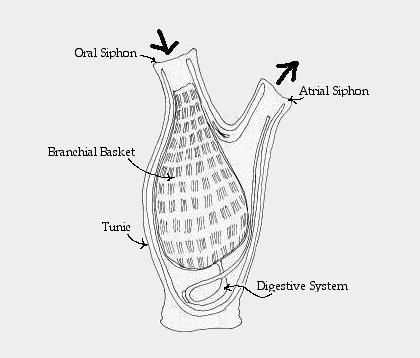Tunicates
Tunicates
Comparison of Tunicates and Vertebrates
Both share a notochord, dorsal hollow, and a nerve cord. These characteristics are only seen in embryonic development of tunicates. Since tunicates are sedentary they lose some parts of their skeletal anatomy. This allows them to attach to their chosen spot, this will then lead them to grow the necessary structures to live an adult life. [1]
Sensory Neural Structures
Anatomy of Tunicates
Tunic- tissue that provides protection from predators.
Heart- pumps blood in a different matter. For a few minutes it will pump in one direction and then pump in reverse for another few minutes.
Siphon/ in and out- allows for the animal to feed
Pharynx- allows for the animal to filter food and dissolved oxygen.
Evolution of Tunicates
Ascidiacae
Fast evolving
Loss of Genes- Some are expressed in similar organisms while others are missing genes.
Larval Stage- Tadpole like stage where are similarities with vertebrates are present.
Works Cited
Lemaire P, Piette J. 2015 Tunicates: exploring the sea shores and roaming the open ocean. A tribute to Thomas Huxley. Open Biol. 5: 150053. http://dx.doi.org/10.1098/rsob.150053
